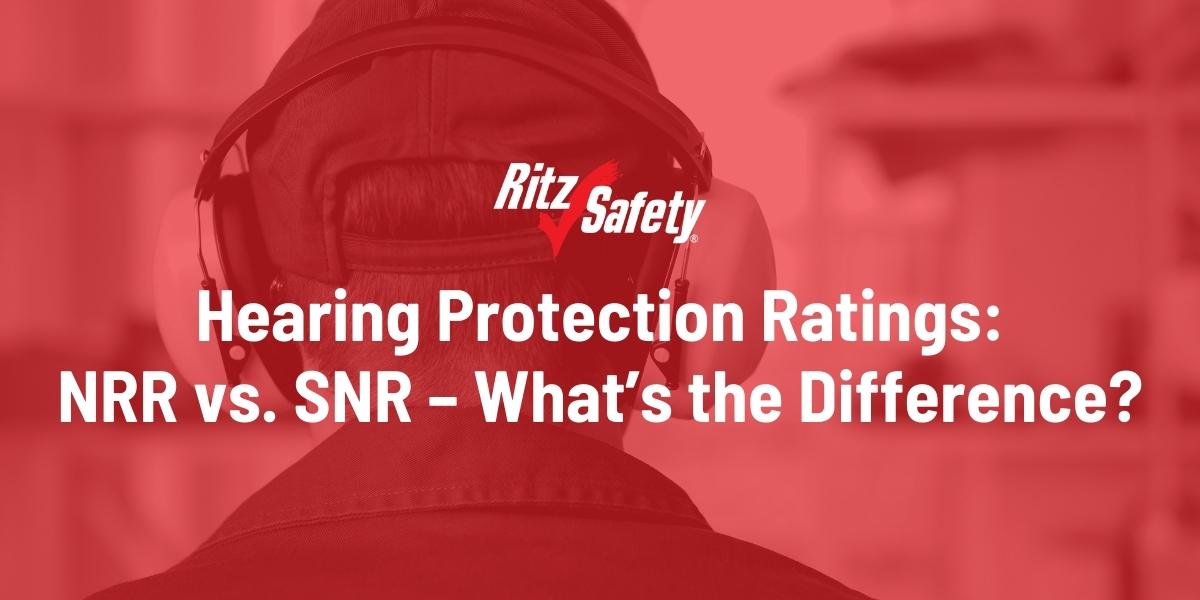
Hearing Protection Ratings: NRR vs. SNR – What’s the Difference?
When noise levels exceed 85dBA for an 8-hour period, a hearing conservation program must be put in place. But it’s a good idea to start wearing hearing protection any time you’re exposed to any louder or persistent noises to help protect your hearing. With so many hearing protection options, how do you decide which ones are the perfect fit? This is where earplug ratings come in. Earplug ratings help us easily know which earplugs we need to help block out some of the noise we are exposed to. An earplug with a higher rating should block out more of the noise than that with a lower rating. However, there happens to be two different earplug ratings: SNR and NRR. While both are intended to show the amount of noise reduction offered by the earplug and are both denoted by a number of decibels (dB), there are some differences between the two, and while there isn’t an exact formula, usually the SNR is about 3dB higher than the NRR.
SNR - Single Number Rating
The Single Number Rating or SNR is the EU’s standard for showing the attenuation of hearing protection and is more frequently used in the UK. This rating is evaluated by looking at sound frequencies between 63 and 8000 Hz and accounts for both high and low frequency noise. It provides a rough estimate of the noise reduction offered by the hearing protection. For example, an SNR of 20 would roughly provide a 20dB reduction in the noise you hear. However, this is based on ideal conditions such as proper fitting, so the actual noise reduction the earplug offers may be slightly different due to the variations in real-world use. The SNR rating is also often paired with the HML rating, which gives an idea of attenuation provided at different frequencies: high, medium, and low. This allows you to pick hearing protection when the noise environment is mostly dangerous at a specific frequency area.
NRR - Noise Reduction Rating
The Noise Reduction Rating or NRR, is the standard most used in the United States. An NRR is basically an average reduction in noise levels provided by the hearing protection in a controlled laboratory setting following the ANSI S 3.19 standard. In ideal conditions, hearing protection with an NRR of 30dB should reduce the noise you hear by 30dB, but like with a SNR, these don’t account for variations such as improper fit in real-world situations. An ill-fitting ear plug can greatly reduce the amount of noise it actually blocks, something that makes a big difference. Because even though it seems small, a 3dB increase in noise actually represents 200% growth. Which means that 88dB is twice the intensity as 85dB, something that could be very dangerous if you are not wearing enough protection! Because of this, it’s suggested that to get an accurate representation of the actual noise reduction the hearing protection offers, you need to derate the actual NRR rating.
How to Derate an NRR Rating
There are a few different ways you can derate your NRR rating, each of which may offer a different result. So, as it’s better to be safe than sorry, choose the calculation that gives you the lowest derated NRR. It’s better to be overprotected than underprotected! Without further ado, what formulas can you follow to derate your NRR rating?
The first way is to simply derate your hearing protection by 50%, as suggested by OSHA. Or if you want to do a little more math, you can use the following formula. First subtract 7 from the given NRR. Then divide by two. This is your new derated NRR which can then be subtracted from the estimated noise level to get your estimated exposure.
Estimated Exposure (dBA) = TWA (dBA) – [(NRR – 7) / 2]
For example, let’s take an NRR of 33 and an environmental noise level of 100.
(33 – 7) / 2 = 13
Your new derated NRR would be 13.
And 100 – 13 = 87. Meaning the actual estimated exposure would be 87dB, despite the NRR being 33 which should, in ideal conditions, give you an estimated exposure of 67dB.
This is why it is best practice when evaluating what hearing protection options to choose, to err on the safe side and choose the higher rated protection or add additional protection if needed!
Looking for hearing protection to suit your needs? Shop all hearing protection at Ritz Safety!
Need help determining your perfect hearing protection fit? Let's talk!